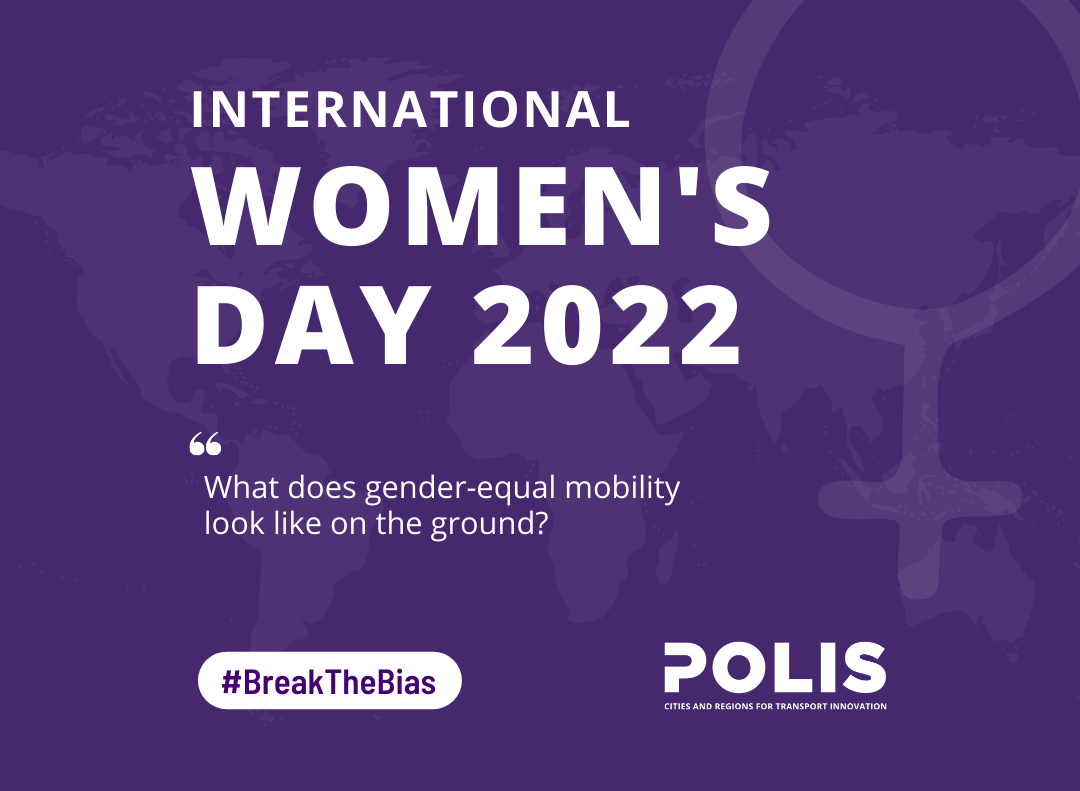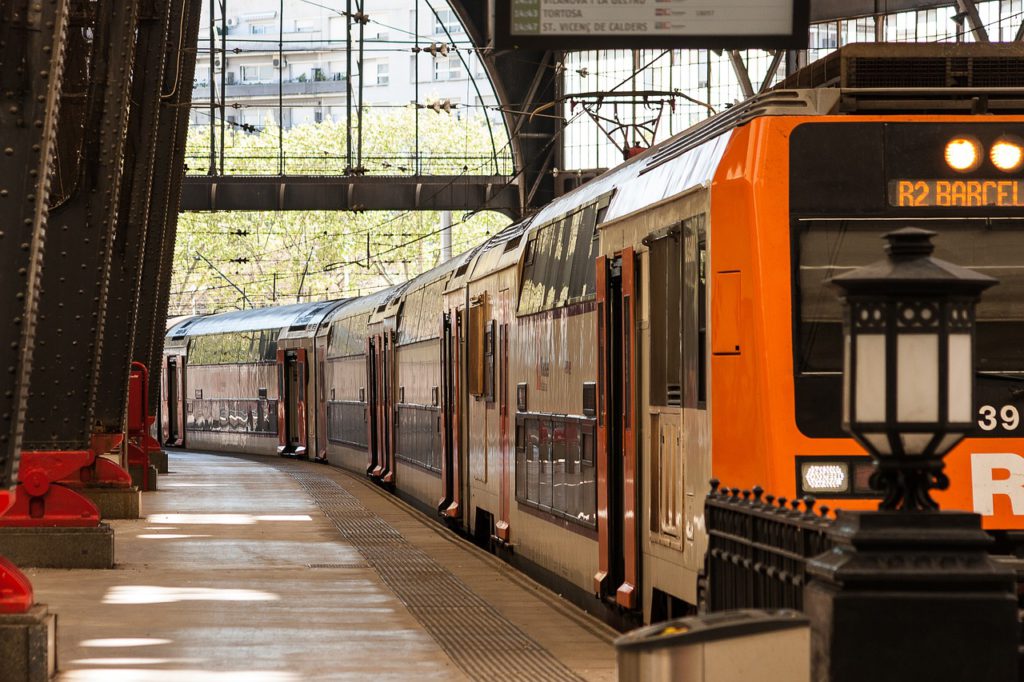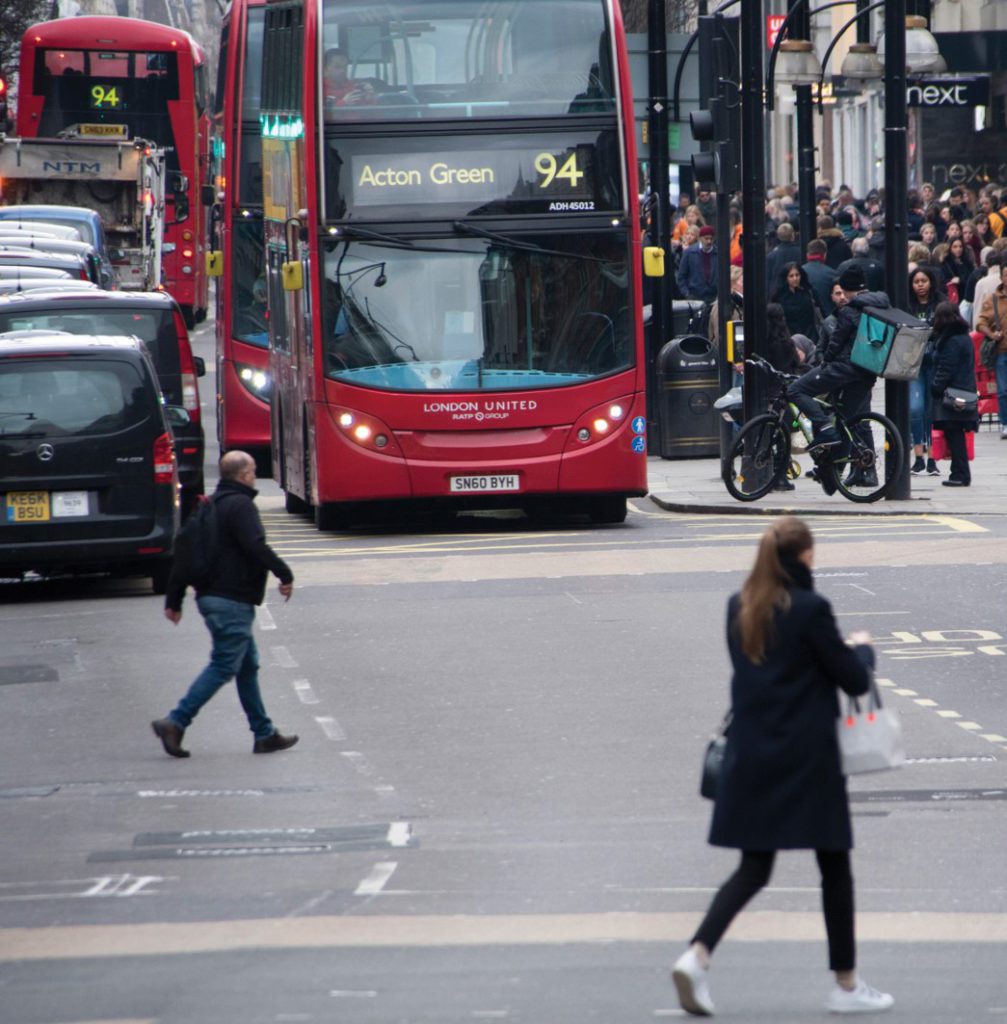Gender-equal mobility: can we #BreakTheBias?
Terms such as ‘gender mainstreaming’, ‘gender sensitive’ and ‘gender responsive’ infrastructure have been deployed across reports, policy notes and topic guides. This is, of course, to be celebrated; but what does gender-equal mobility look like on the ground? What is our destination, and how will we know when we have arrived?
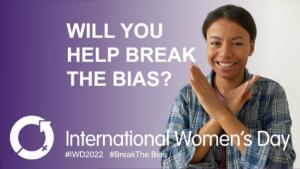
Promo image from the IWD official page
The campaign theme for International Women’s Day 2022 is #BreakTheBias, perhaps one of the aptest motifs for the transport sector.
Europe’s urban mobility is at a critical crossroad in its road to gender equality. We know our mobility data is failing to understand female mobility patterns, we recognise our transport services prejudice female passengers (if not actively marginalize them), and we are all too aware that our workforce is overwhelmingly (white) male. Yet, a more gender-equal mobility landscape cannot be built on these same biases which neglect the diversity of women’s needs and demands.
What does breaking the bias look like on the ground?
Gender-equal mobility caters to women’s differing travel patterns. It recognises women’s outsized unpaid domestic and caring responsibilities, yet it also challenges assumptions and expectations surrounding women’s domestic status, facilitating and supporting education and employment opportunities.
It is also a transport offering where women can travel home safely, without fear of harassment. Where women - and men - feel equally as safe waiting for a bus or walking through a park as they do jumping in their cars… at any hour. In such a gender mainstreamed paradigm, cutting the night short, adapting journeys home and sharing live locations is resigned to the corridors of history.
Furthermore, it is a setting where women take an equal role in decision making at every level of mobility, from ideation to planning and implementation. However, bias will not be broken by numbers alone; the transport sector must actively recruit, train, and promote female staff, ensuring they are given the opportunity to share ideas and shape outcomes, as well as pose challenges without fear of reprisal.
Perhaps, most critically, a gender-equal mobility is one that recognizes the inequality between women. Race, sexuality, physical (dis)ability, citizenship and economic status all impact the ways women (and men) experience urban mobility; often in ways that aggravate their disadvantages and marginalisation. Parity for a select group of women does not amount to gender equality.
Gender-equal mobility translates into sustainable mobility
International Women’s Day is an occasion to celebrate female success, the steps taken and the milestones reached in the journey towards a more gender-equal world. However, it is also a chance to reflect on how far we have left to go… and #BreakTheBias!
For the mobility sector, the statistics still make for grim reading. With women representing under a quarter of the transport workforce (and even less at boardroom levels), almost 1 in 3 reporting violence while using transport services, and residual gender imbalance in new shared mobility services, we are not performing on any of the indicators of gender equality.
Failure to take gender equality seriously will impede any sustainable mobility transition. If we are sincere about boosting public transport ridership, promoting active travel and enhancing shared services, we need more than just half the population on board.
Nevertheless, change is afoot.
POLIS is taking it seriously: gender equality is at the heart of our work.
Take a look at our staff list, and you will see a host of intelligent, capable and strong women, and at our Annual Conference in Gothenburg, we were proud to host an all-women opening plenary panel.
At the same time, our Governance & Integration Working Group has put female leadership high on the agenda, while our Safety & Security Working Group held multiple events discussing gender-based violence.
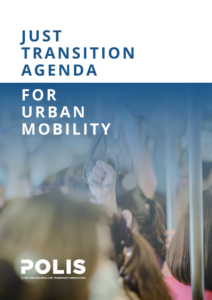
POLIS has launched the Just Transition Agenda to highlight what is needed to achieve a just transition in urban mobility
We believe gender equality can only be achieved when affordable, safe, and inclusive mobility for all is at the top of our sustainable transport agenda, and in POLIS’ Just Transition Agenda we called for just this.
Meanwhile, our latest Thinking Cities magazine issue was brimming with best practices for translating words into action on the ground.
We are also incredibly proud of the work our members have been doing. From Paris to Catalonia, Sustrans to SBB, POLIS member cities, regions, operators and knowledge institutes have been putting gender on the agenda, finding creative and lasting solutions to an unequal mobility landscape.
What's more? Throughout this week we will be sharing what the above-mentioned members (but also others!) are doing to achieve a gender-equal urban mobility - we will go in-depth and give you all the deets to let yourselves be inspired and prompted to learn, translate and replicate their messages and actions.
Stay tuned!
___
Series articles:
